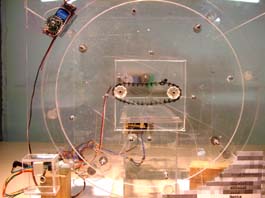The idea is to create spaces and objects that can physically re-configure themselves to meet changing needs.
The central issues explored are human and environmental interaction, embedded computational infrastructures, physical control mechanisms and the processes that architects and designers can use in creating and demonstrating of such systems. Intelligent kinetic systems arise from the convergence of three key elements: kinetic engineering, embedded computation and adaptable architecture. At the intersection of these areas exists an unexplored architecture tuned to address today’s dynamic, flexible and constantly changing needs. The course will address kinetic function as a technological design strategy for building types and objects that are efficient in form, and inherently flexible with respect to various contexts and a diversity of purposes. We will examine contemporary examples and potential applications for adaptable architectural spaces ranging from multi-use interior adaptability, to complete structural transformability, to innovative site and programmatic responses. In addition, we will explore built projects using sensor technology as a computational control mechanism for simulating responsive behavior, and how such technology may act as independent subsystems that can be beneficially incorporated into kinetic design. The course will provide theoretical and practical foundations in the technological tools necessary for the physical modeling of systems that can demonstrate responsive behaviors. It is project based and centers on a series of four design exercises successively building upon each other and culminating in the construction of working physical models of intelligent kinetic systems. The motivation for the projects should be in exploring responsive and intelligently active structures for architecture with respect to changing individual, social and environmental demands.

